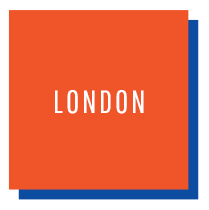SOUTHWARK, LONDON
by Steph Berns
The research in London, conducted by by Steph Berns in collaboration with Professor Kim Knott (both of Lancaster University), focuses on a one mile stretch of Southwark, South London.
The London Borough of Southwark boasts a rich religious history of Roman temples, medieval priories, and 18th and 19th century churches (many of the latter are still in use today). But the sacred urban landscape is also shaped by the loss of places of worship, due to fires, the dissolution of the monasteries in the 16th century, bomb damage during World War II and the closure of churches as a result of falling attendance. Southwark's religious story is not one of religious decline, however. In more recent years, the Borough's growing Muslim and Pentecostal communities (the latter being predominantly African and Caribbean heritage) have become increasingly evident in the built environment. From the conversion of shops and cinemas into churches to a newly built mosque, these buildings bear testament to an increasingly diverse religious public.
Walking along this one-mile stretch of Southwark, as the photographers did for this exhibition, reveals a multifarious landscape of sacred sites both old and new, traditional and non-traditional. By the river is Southwark Cathedral, the mother church of the borough's Anglican Diocese and a popular tourist attraction. Down a quiet residential street is Crossbones Graveyard, a former paupers’ burial ground where offerings are left on the gate to commemorate the “outcast dead”. Turning left at the end of the high street stands the Baitul Aziz Islamic Cultural Centre, which opened a decade ago and is currently undergoing expansion to accommodate the growing Muslim populace.
Focused on this one area, this research explores how these sacred sites connect across space (through mobile events such as parades, processions and guided walks) and through time (by means of personal narratives and archaeology). The study also examines the processes by which sacred sites are made visible, and the debates and encounters that their visibility (or lack of it) provokes.


